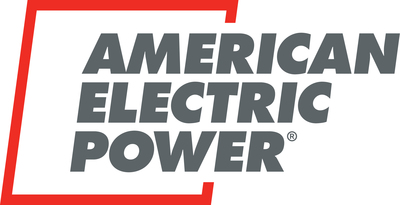COLUMBUS, Ohio, Dec. 27, 2023 /PRNewswire/ -- American Electric Power (Nasdaq: AEP) subsidiaries Appalachian Power and Wheeling Power today filed a settlement agreement with the Public Service Commission of West Virginia (PSC) that addresses the companies' Expanded Net Energy Cost (ENEC) cases. The agreement outlines a process for recovering deferred fuel and purchased power costs, major storm restoration expenses, power plant balances and environmental compliance project expenses through securitization.
The West Virginia Energy Users Group and the West Virginia Coal Association joined Appalachian Power and Wheeling Power in signing onto the agreement. The settlement is subject to review and approval by the PSC.
"If approved by the Commission, this settlement agreement will benefit our West Virginia customers by spreading out the recovery of these necessary costs to help keep customer bills affordable and support a reliable energy system," said Peggy Simmons, AEP's executive vice president of Utilities.
As part of the settlement, Appalachian Power and Wheeling Power agreed to reduce their requested fuel deferral amount by $50 million to minimize the impact on customers. The agreement proposes to utilize West Virginia's utility securitization law to address approximately $1.9 billion in costs. This is a new option approved in the 2023 legislative session, with broad support, to address customer affordability.
Securitization enables these costs to be recovered over a much longer timeframe, mitigating the impact on customer bills. Securitization will not affect the retirement of Appalachian Power's and Wheeling Power's coal plants, and the companies intend to run those plants, which benefit West Virginia customers and support grid reliability, through the end of their useful lives. The securitization plan will be filed by Appalachian Power and Wheeling Power and will be subject to review and approval by the PSC.
AEP is reaffirming the forecasted financial data previously issued Nov. 10, 2023, relating to its 2024 operating earnings guidance, its projected 6%-7% long-term earnings growth rate and its 14%-15% FFO/Debt target.
This report made by American Electric Power and its Registrant Subsidiaries contains forward-looking statements within the meaning of Section 21E of the Securities Exchange Act of 1934. Although AEP and each of its Registrant Subsidiaries believe that their expectations are based on reasonable assumptions, any such statements may be influenced by factors that could cause actual outcomes and results to be materially different from those projected. Among the factors that could cause actual results to differ materially from those in the forward-looking statements are: changes in economic conditions, electric market demand and demographic patterns in AEP service territories; the impact of pandemics and any associated disruption of AEP's business operations due to impacts on economic or market conditions, costs of compliance with potential government regulations, electricity usage, supply chain issues, customers, service providers, vendors and suppliers; the economic impact of increased global trade tensions including the conflicts in Ukraine and the Middle East, and the adoption or expansion of economic sanctions or trade restrictions; inflationary or deflationary interest rate trends; volatility and disruptions in the financial markets precipitated by any cause, including failure to make progress on federal budget or debt ceiling matters, particularly developments affecting the availability or cost of capital to finance new capital projects and refinance existing debt; the availability and cost of funds to finance working capital and capital needs, particularly if expected sources of capital, such as proceeds from the sale of assets or subsidiaries, do not materialize, and during periods when the time lag between incurring costs and recovery is long and the costs are material; decreased demand for electricity; weather conditions, including storms and drought conditions, and AEP's ability to recover significant storm restoration costs; limitations or restrictions on the amounts and types of insurance available to cover losses that might arise in connection with natural disasters or operations; the cost of fuel and its transportation, the creditworthiness and performance of fuel suppliers and transporters and the cost of storing and disposing of used fuel, including coal ash and spent nuclear fuel; the availability of fuel and necessary generation capacity and the performance of generation plants; AEP's ability to recover fuel and other energy costs through regulated or competitive electric rates; the ability to transition from fossil generation and the ability to build or acquire renewable generation, transmission lines and facilities (including the ability to obtain any necessary regulatory approvals and permits) when needed at acceptable prices and terms, including favorable tax treatment, and to recover those costs; new legislation, litigation and government regulation, including changes to tax laws and regulations, oversight of nuclear generation, energy commodity trading and new or heightened requirements for reduced emissions of sulfur, nitrogen, mercury, carbon, soot or particulate matter and other substances that could impact the continued operation, cost recovery, and/or profitability of generation plants and related assets; the impact of federal tax legislation on results of operations, financial condition, cash flows or credit ratings; the risks associated with fuels used before, during and after the generation of electricity and the byproducts and wastes of such fuels, including coal ash and spent nuclear fuel; timing and resolution of pending and future rate cases, negotiations and other regulatory decisions, including rate or other recovery of new investments in generation, distribution and transmission service and environmental compliance; resolution of litigation or regulatory proceedings or investigations; AEP's ability to constrain operation and maintenance costs; prices and demand for power generated and sold at wholesale; changes in technology, particularly with respect to energy storage and new, developing, alternative or distributed sources of generation; AEP's ability to recover through rates any remaining unrecovered investment in generation units that may be retired before the end of their previously projected useful lives; volatility and changes in markets for coal and other energy-related commodities, particularly changes in the price of natural gas; the impact of changing expectations and demands of customers, regulators, investors and stakeholders, including heightened emphasis on environmental, social and governance concerns; changes in utility regulation and the allocation of costs within regional transmission organizations, including ERCOT, PJM and SPP; changes in the creditworthiness of the counterparties with contractual arrangements, including participants in the energy trading market; actions of rating agencies, including changes in the ratings of debt; the impact of volatility in the capital markets on the value of the investments held by AEP's pension, other postretirement benefit plans, captive insurance entity and nuclear decommissioning trust and the impact of such volatility on future funding requirements; accounting standards periodically issued by accounting standard-setting bodies; other risks and unforeseen events, including wars and military conflicts, the effects of terrorism (including increased security costs), embargoes, wildfires, cyber security threats and other catastrophic events; and the ability to attract and retain the requisite work force and key personnel.

 View original content to download multimedia:https://www.prnewswire.com/news-releases/appalachian-power-wheeling-power-seek-approval-of-settlement-agreement-in-fuel-cost-cases-302022930.html
View original content to download multimedia:https://www.prnewswire.com/news-releases/appalachian-power-wheeling-power-seek-approval-of-settlement-agreement-in-fuel-cost-cases-302022930.html
SOURCE American Electric Power
![]() View original content to download multimedia:https://www.prnewswire.com/news-releases/appalachian-power-wheeling-power-seek-approval-of-settlement-agreement-in-fuel-cost-cases-302022930.html
View original content to download multimedia:https://www.prnewswire.com/news-releases/appalachian-power-wheeling-power-seek-approval-of-settlement-agreement-in-fuel-cost-cases-302022930.html







